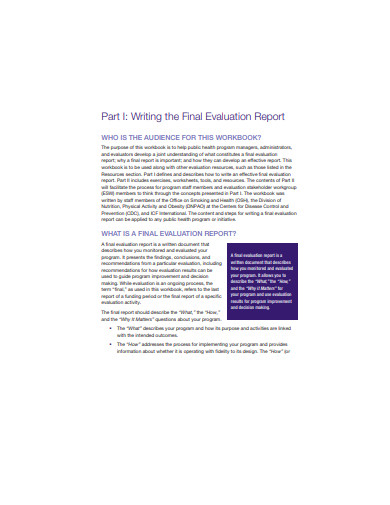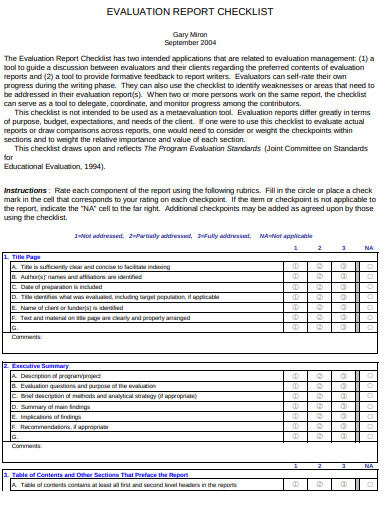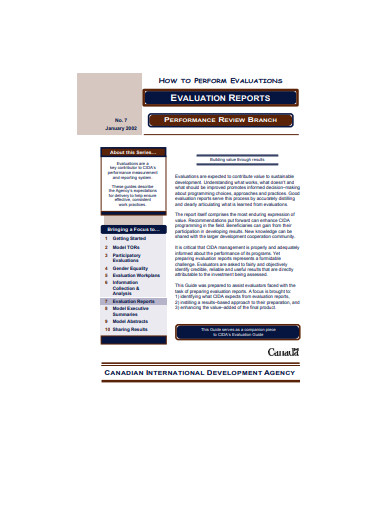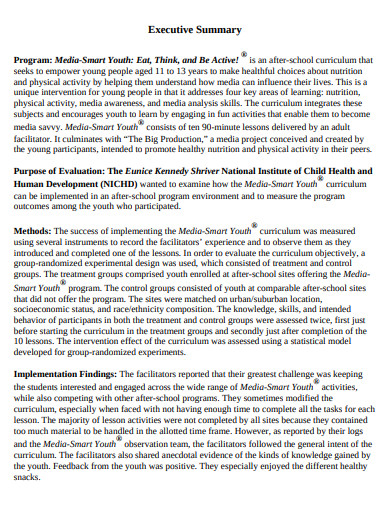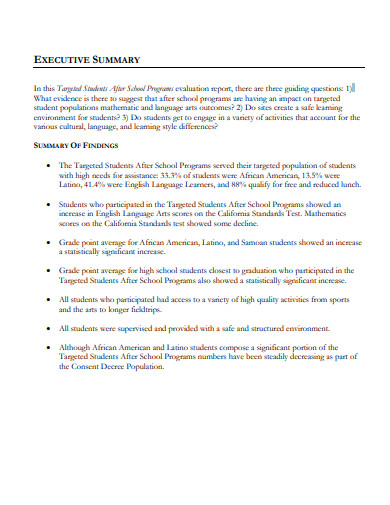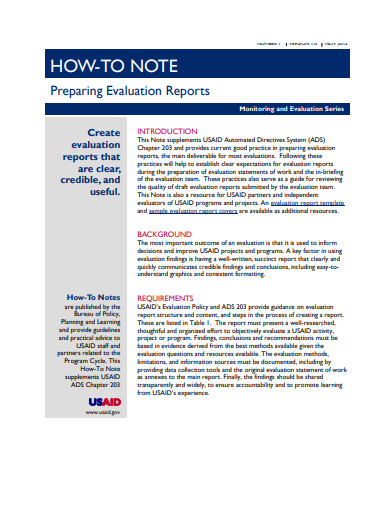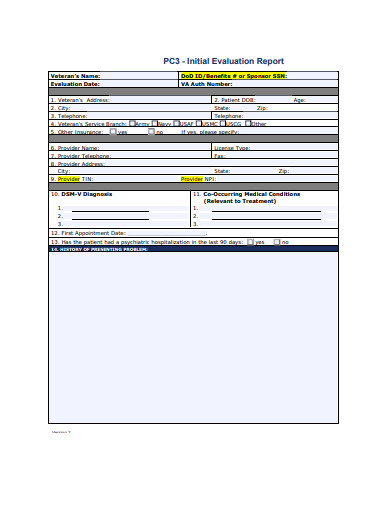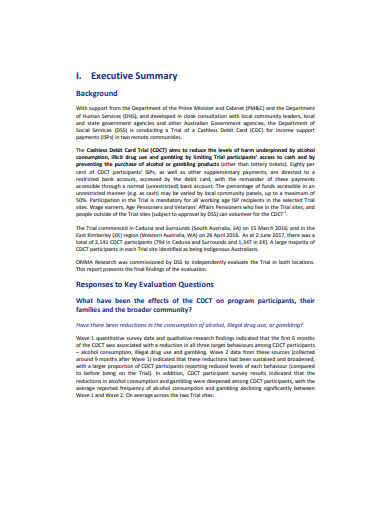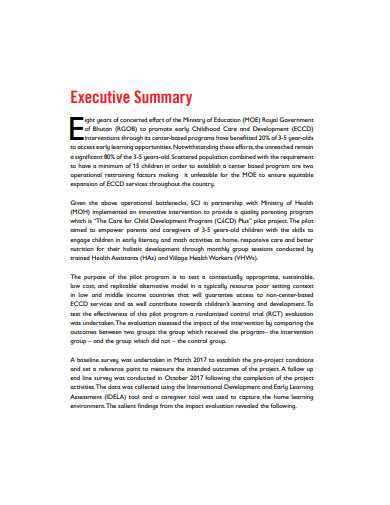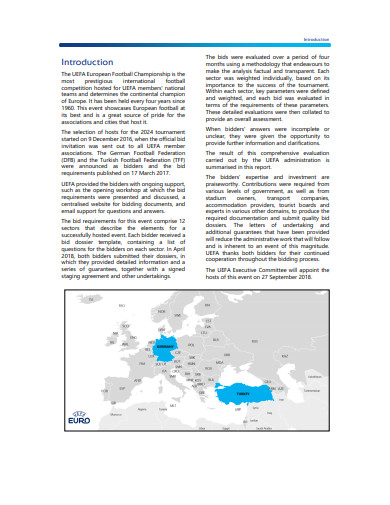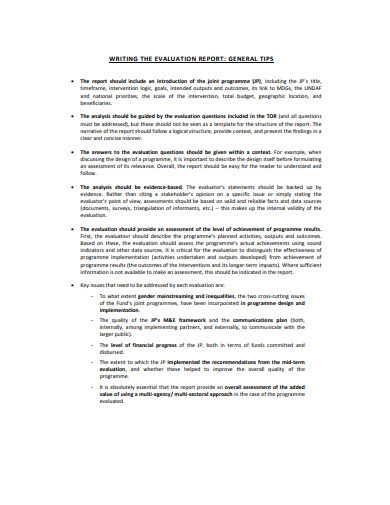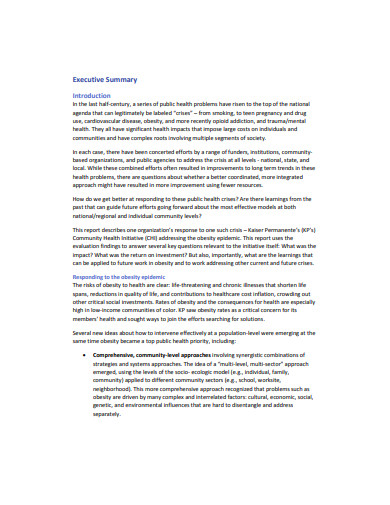17+ Evaluation Report Examples to Download
Several organizations conduct events on a daily basis to keep the customers engaged with the organization, also there are several events organized by small groups of people for a specific purpose. The purpose of the event or the project is required to be kept in check after completion of the work. It’s required to prepare an evaluation report of the project so that the purpose can be kept in check.
An evaluation report helps us to understand the progress of the event and also track if the project or event is headed in the right direction or not. Here is a list of 17+ evaluation report examples and templates that you can refer to prepare an evaluation report of your own.
Evaluation Report Examples & Templates
1. Evaluation Report Template
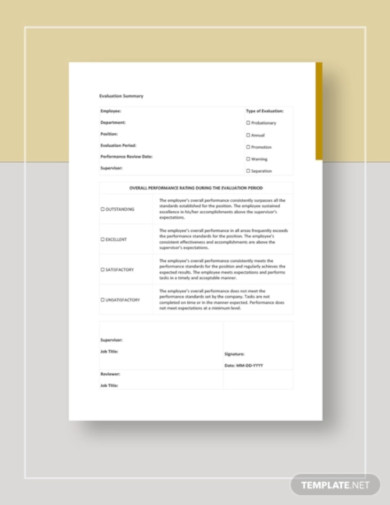
Starting a business is a goal oriented process. While going forward with the business there comes a requirement to evaluate the employees of the business and evaluate the different aspects of their work and character/nature so that the report can be used to take further decisions to promote or retain or terminate the services of the concerned employee.
2. Building Evaluation Report Template
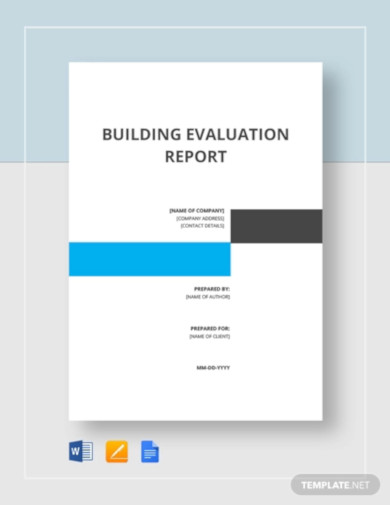
There are several construction projects going on around the town. Several buildings are being constructed on daily basis. Being a place where people live, its required to prepare an evaluation report to understand if the construction is safe for living or not. Using this template a proper evaluation report can be created.
3. Training Evaluation Report Template
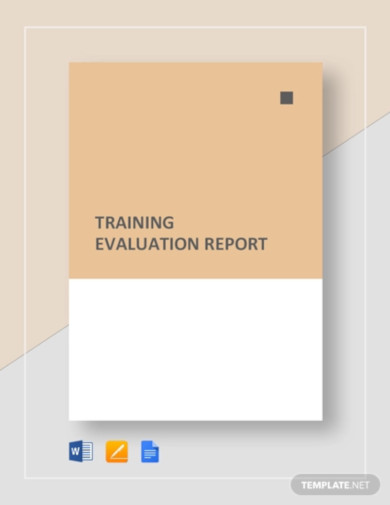
Several organizations provide training to the people before employing them into the organization. At times, training is also provided to existing employees in case of new technology or process being introduced. This training evaluation report can be used to prepare a proper evaluation report of the organization training attempts for both types of cases.
4. Training Evaluation Report Example
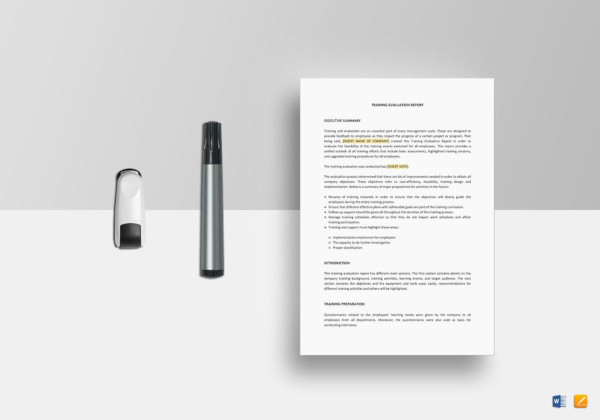
Several people train to achieve their personal or professional goals in different aspects. Just working hard to achieve the goals is not an option, it’s also required to have a check on the growth and progress of the training so that further techniques can be formed and implemented. This template can be used to prepare a well formatted evaluation report for training so that maximum benefit can be imparted from such trainings to the participants, who are providing the feedback in this evaluation.
5. Effective Developing Evaluation Report
This template is a guide on making an evaluation report for nonprofit enterprises. It shows a sample of evaluation report and also gives the steps of how to prepare a report which is competitive and informative.
6. Evaluation Report Checklist Example
This is a template which contains the steps for evaluators to self assess themselves and then provide the correct inputs to writers for writing their findings appropriately. It provides a checklist to ensure that there are no gaps in the process of evaluation or providing feedback or providing writing-instructions as well.
7. Sample Evaluation Report Example
This template is a sample of a guide on how to prepare an evaluation report by Canadian International Development Agency. It teaches us ways about how to prepare an effective evaluation report so that the readers of the report can benefit from it the most.
8. Youth Program Evaluation Report Example
This youth program evaluation report is a sample of an evaluation report of a project which deals with the growth of the children aged between 11 to 13 years. It focuses on improvement of 4 key points: nutrition, physical activity, media awareness, and media analysis skills.
9. Evaluation Report Template in PDF
Preparing an evaluation report needs a lot of skills. This template will help you to prepare a proper evaluation report for your project if you follow the precise guidelines provided in it.
10. Student Program Evaluation Report Template
This student program evaluation report is a sample of an evaluation report of the project implemented by San Francisco Unified School District. It deals with security of marginalized students and keeping them away from juvenile crimes.
11. Sample Evaluation Report Example in PDF
This template is a premise which will teach you the ways of preparing an evaluation report and the different points that are required to be followed for making it a successful attempt.
12. Initial Evaluation Report Template
Health issues are very common these days. This template can be used to keep a track of persisting health issues, especially of the veterans who have served their country.
13. Final Evaluation Report Example
This template is a sample of an evaluation report on cashless debit card payment trials by the Australian government department of social service for remote minority communities so that crimes along with drug and alcohol abuse can be controlled by reducing access to cash.
14. Impact Evaluation Report in PDF
This template is a sample of evaluation report of Bhutan which deals with the development of childcare facilities for children from early ages for proper growth of human capital in the country.
15. Psychologist Evaluation Report Template
This psychologist evaluation report can be used a as an evaluation report of a person by a licensed psychologist to track the status of the problems and progress made to mitigate them.
16. Sample Evaluation Report in PDF
Several athletic events are organized throughout the year. This template is a sample of an evaluation report of UEFA EURO cup 2014 for evaluating the process of selection of the host country.
17. General Evaluation Report Example
This template can be very helpful to the people who want to know the steps of preparing an evaluation report. This is a sample of evaluation report guide by MDG achievement fund.
18. Final Evaluation Report in PDF
This template is a sample of a final evaluation report of Kaiser Permanente Community Health Initiative. The main objective of the organization is to help people prevent the basic health issues.



